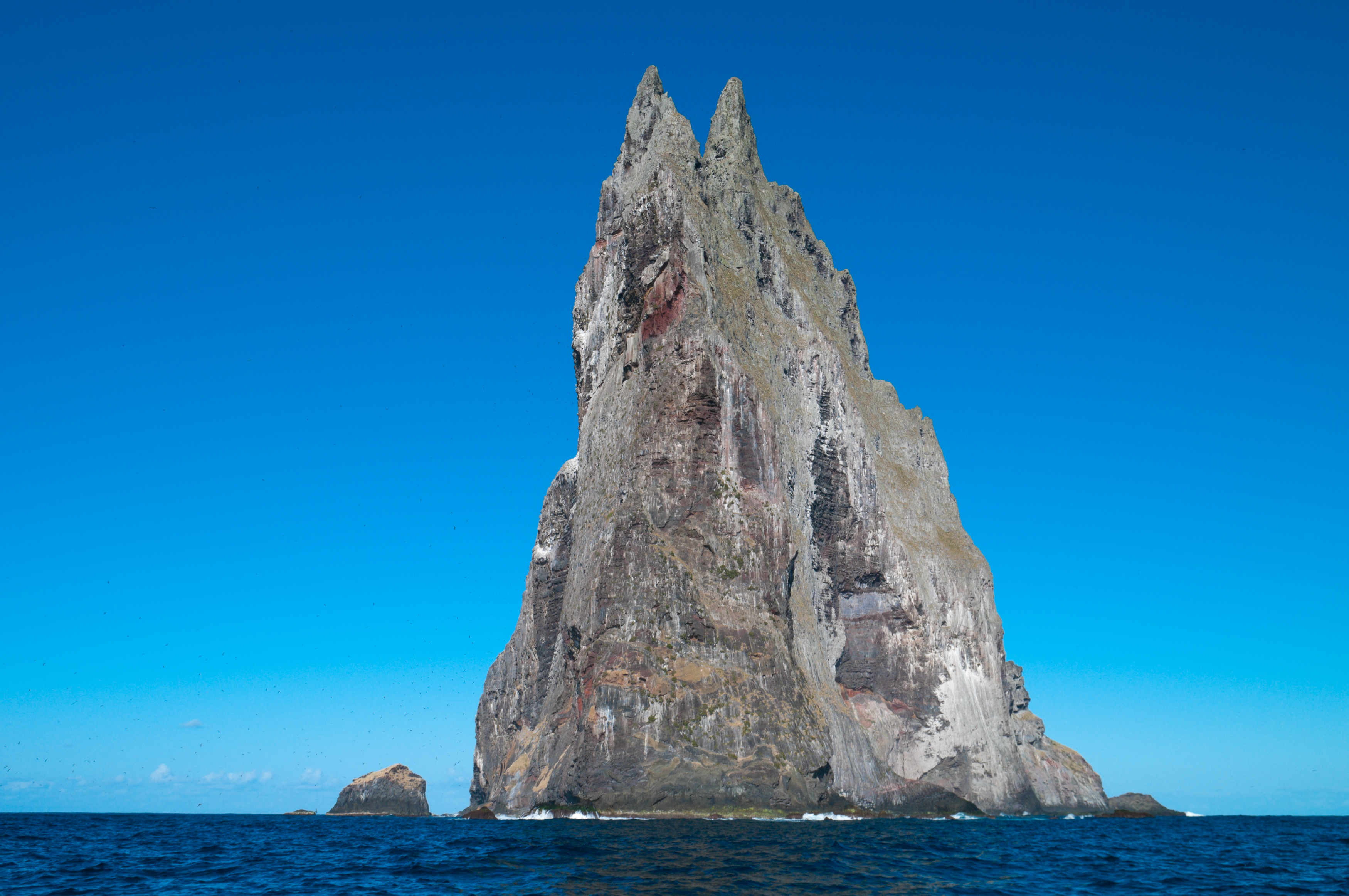Rare and endangered animals are often hidden away in hard-to-reach locations and might require trekking through a jungle or hacking through thick vegetation to catch a glimpse. Their limited populations sometimes only live in one specific area – and for the world’s rarest insect, this is a small, uninhabited sea stack in the Pacific Ocean. Meet the tree lobster.
Tree lobsters – also known as the Lord Howe Island stick insect (Dryococelus australis) – have a pretty remarkable story. With dark-colored bodies, six long legs, and a length reaching up to 15-20 centimeters (6-8 inches) they are pretty prehistoric-looking critters. They belong to the order Phasmatodea, which contains stick insects, often referred to as phasmids.
Originally, the species was found only on Lord Howe Island between Australia and New Zealand in the Tasman Sea. In 1918, the island became populated by black rats after the cargo ship SS Makambo was wrecked there, unwittingly unleashing an ecological disaster.
Unfortunately, the rats caused massive problems for the native species – including the tree lobsters, which were thought to have been wiped out around 1920. The rats have also been blamed for wiping out five bird species, at least 13 invertebrates, and two plant species on the island.
However, in the 1960s, reports started indicating that rock climbers on Ball’s Pyramid were finding shed tree lobster skins. Ball’s Pyramid is small and uninhabited, formed from an incredibly steep sheer volcanic outcrop 23 kilometers (14 miles) away from Lord Howe Island – and is also the tallest sea stack in the world.

Ball’s Pyramid is home to the only non-captive population of Lord Howe Island stick insects.
Image Credit: Ashley Whitworth/Shutterstock.com
“It’s quite a stark landscape,” said Kate Pearce, life sciences manager for invertebrates at the Melbourne Zoo told The New York Times in 2024. “There’s not a lot of soil on it.”
These insects didn’t really look the same as the originals from Lord Howe; they had smaller legs and were darker in color. Had they been carried from Lord Howe Island by birds, or were they a different species altogether? With confusion over these reports, the species was officially declared extinct by the IUCN Red List in 1986.
The story, however, does not end there – in 2001, a team mounted an expedition to get to the bottom of the rock climber’s reports. After finding insect frass (poop), three individuals were found living on a tea tree on Ball’s Pyramid, 64 meters (213 feet) above sea level.
This discovery led to a captive breeding program from four insects collected in 2003. DNA testing confirmed that these were the long-lost tree lobsters. One pair was named Adam and Eve and sent to Melbourne Zoo to begin the breeding program.
“The Lord Howe phasmid is an endemic stick insect that was thought to be extinct until it was rediscovered in 2001. It’s a bulky flightless nocturnal stick insect affectionately known the ‘Land Lobster’ and is as long as the palm of a hand, glossy black, with a tubular body as thick as a finger,” said Senior Scientist with the Department of Planning and the Environment, Nicholas Carlile, in a 2022 statement.
The confusion around the species was eventually solved – a paper published in 2017 confirmed that the mitochondrial genomes specimens from Ball’s Pyramid and the Lord Howe Island museum specimens were less than 1 percent different and “that D. australis has successfully evaded extinction so far”.
As of 2022, thanks to the dedication of the captive breeding program at Melbourne Zoo, nearly 19,000 of the insects have been hatched. The species was also captively bred at San Diego Zoo, and visitors were invited to see the species on display in a specialized habitat at the end of 2023.
The IUCN Red List reports that this species is still Critically Endangered, with numbers thought to fluctuate between 9 and 35 individuals living wild. The main threats to this species are storms and droughts due to their very low population size. The species relies on Melaleuca shrubs that only occur on one of the Ball’s Pyramid’s terraces and are themselves threatened by invasive vine species. Poaching could also lead to population collapse.
As for the rats, the Lord Howe Island Board declared that “An intensive and spatially comprehensive rodent detection check was carried out in July 2023 […] found no live rodents for over two years, signaling a significant milestone in the Island’s eradication process.”
It is hoped that one day these rare stick insects could be reintroduced to their original home.
Source Link: The World’s Rarest Insect Lives On The World's Tallest Sea Stack In The Pacific Ocean